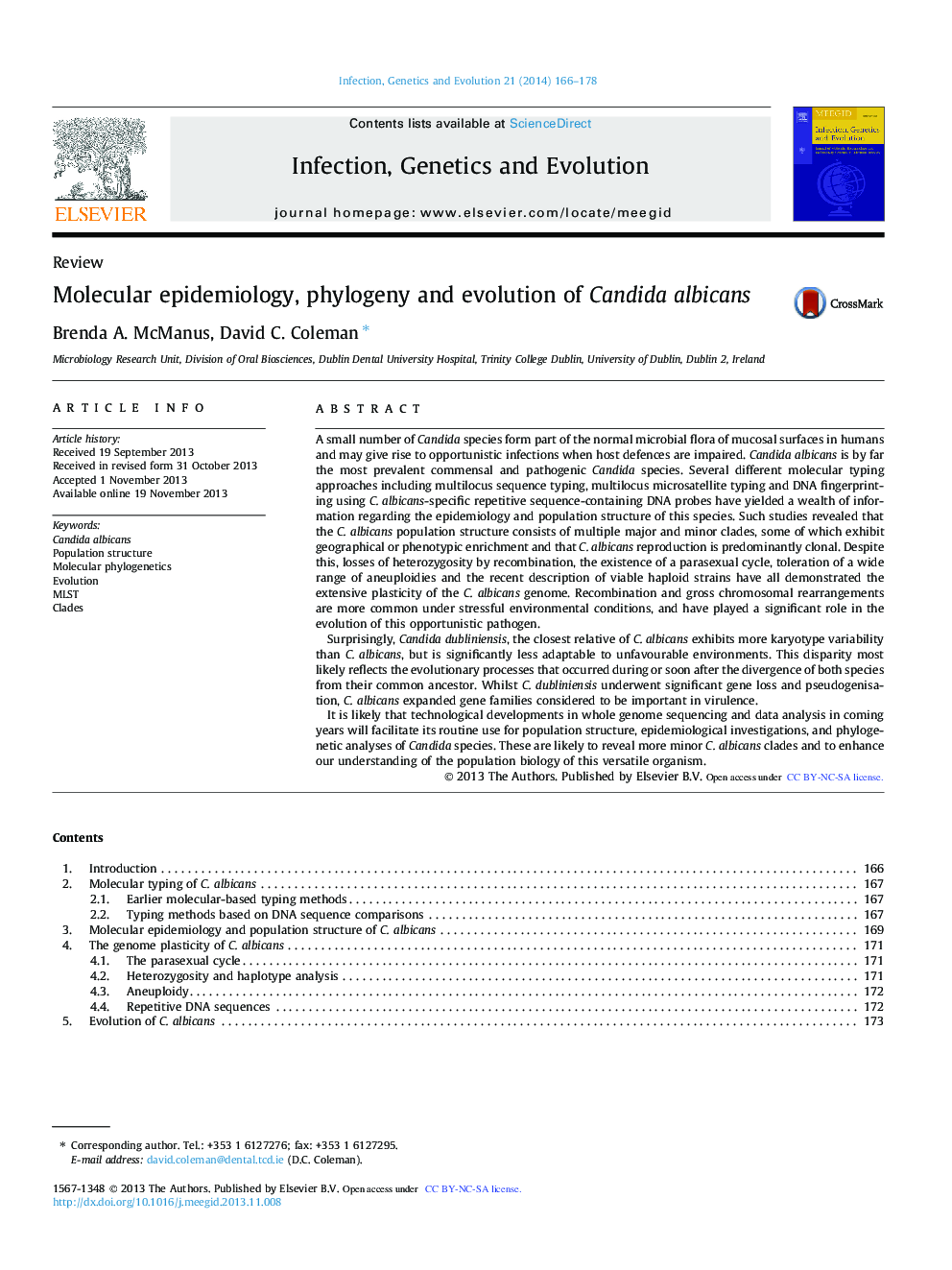| کد مقاله | کد نشریه | سال انتشار | مقاله انگلیسی | نسخه تمام متن |
|---|---|---|---|---|
| 5910163 | 1570182 | 2014 | 13 صفحه PDF | دانلود رایگان |

- Methods commonly used for the elucidation of the Candida albicans population structure.
- Population biology and molecular epidemiology of C. albicans.
- The parasexual cycle and genome plasticity of C. albicans.
- Evolution of pathogenicity in C. albicans by gene family expansion.
- The current understanding of C. albicans ancestry within the fungal kingdom.
A small number of Candida species form part of the normal microbial flora of mucosal surfaces in humans and may give rise to opportunistic infections when host defences are impaired. Candida albicans is by far the most prevalent commensal and pathogenic Candida species. Several different molecular typing approaches including multilocus sequence typing, multilocus microsatellite typing and DNA fingerprinting using C. albicans-specific repetitive sequence-containing DNA probes have yielded a wealth of information regarding the epidemiology and population structure of this species. Such studies revealed that the C. albicans population structure consists of multiple major and minor clades, some of which exhibit geographical or phenotypic enrichment and that C. albicans reproduction is predominantly clonal. Despite this, losses of heterozygosity by recombination, the existence of a parasexual cycle, toleration of a wide range of aneuploidies and the recent description of viable haploid strains have all demonstrated the extensive plasticity of the C. albicans genome. Recombination and gross chromosomal rearrangements are more common under stressful environmental conditions, and have played a significant role in the evolution of this opportunistic pathogen.Surprisingly, Candida dubliniensis, the closest relative of C. albicans exhibits more karyotype variability than C. albicans, but is significantly less adaptable to unfavourable environments. This disparity most likely reflects the evolutionary processes that occurred during or soon after the divergence of both species from their common ancestor. Whilst C. dubliniensis underwent significant gene loss and pseudogenisation, C. albicans expanded gene families considered to be important in virulence.It is likely that technological developments in whole genome sequencing and data analysis in coming years will facilitate its routine use for population structure, epidemiological investigations, and phylogenetic analyses of Candida species. These are likely to reveal more minor C. albicans clades and to enhance our understanding of the population biology of this versatile organism.
Journal: Infection, Genetics and Evolution - Volume 21, January 2014, Pages 166-178